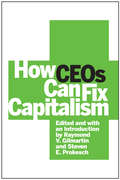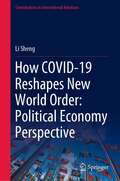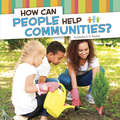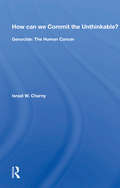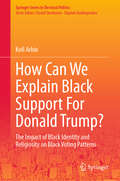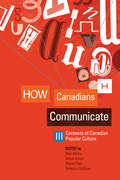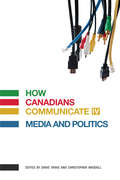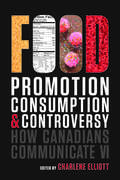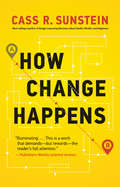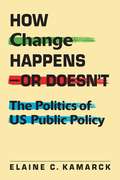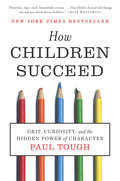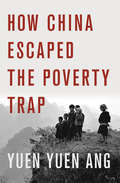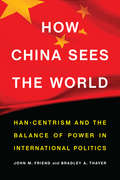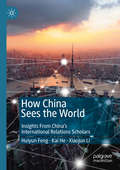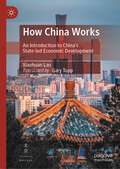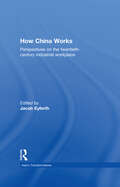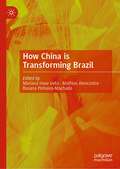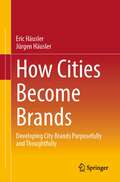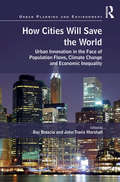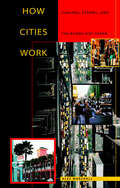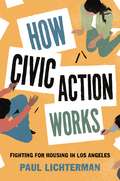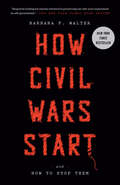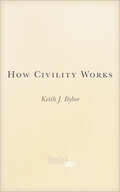- Table View
- List View
How CEOs Can Fix Capitalism
by Steven E. Prokesch Raymond V. GilmartinThe financial crisis of 2008 and the Great Recession caused a crisis of public confidence in business and American-style capitalism, with its focus on maximizing shareholder value. Corporate leaders understood that reform was needed and that they needed to commit themselves to the dual goal of producing benefits for society and their firms' bottom lines-to creating "shared value." But the specific actions they could take to bring about this change were less clear. This ebook offers some of the freshest thinking today on practical measures that businesses can implement to create shared value. Originally published in an online forum hosted by Harvard Business Review, it offers valuable advice about how CEOs, other senior executives, and boards of directors can work together to engage stakeholders in new ways, change their companies' values, build healthier relationships with investors, revamp incentive systems to create long-term value, and develop stronger succession plans.The authors of this collection of short articles include current or former CEOs, such as Howard Schultz of Starbucks and Dominic Barton of McKinsey & Company, and an array of prominent academics and other thought leaders, including Roger Martin of the University of Toronto, Jeffrey Pfeffer of Stanford, and Alfred Rappaport of Northwestern.Its editors are Raymond Gilmartin, the former CEO of Merck and, until recently, an adjunct professor at Harvard Business School, and Steve Prokesch, a senior editor at Harvard Business Review who previously worked at the New York Times and BusinessWeek magazine. In their introduction, they offer five specific recommendations on how CEOs can restore public faith in capitalism.HBR Singles provide brief yet potent business ideas, in digital form, for today's thinking professional.
How COVID-19 Reshapes New World Order: Political Economy Perspective (Contributions to International Relations)
by Li ShengThis timely book explores economic, political, social, and cultural impacts of the COVID-19. It aims to reveal a future world shaped by the worldwide pandemic. The main content of this book is divided into 5 parts: the pandemic—a short sketch of the pandemic through 2020, the acceleration of the global power transition: from East to West, comparison between authoritarian and democratic in the pandemic era, global international organizations under the COVID-19 influence, and regional international organizations under the COVID-19 influence. In addition, this book also analyzes the impacts from two aspects: the changes of the world order and the repercussions for international organizations and globalization. Three questions will be focused: How the pandemic has changed the existing world order? What the new post-pandemic world order will be? How international cooperation has been affected and will be affected? This book is a comprehensive study that investigates the impacts of the COVID-19 pandemic and the political implication on international organizations. It would not only inspire readers to think about impacts of the outbreak of COVID-19 from economic and political perspectives, but also encourage readers to have a deeper understanding of the global political pattern and potential changes of world order after the pandemic. Therefore, the intended readership not only includes the academics but also includes pro-academics. The academic audiences include university and college scholars (especially those majoring in history, political sciences, economics, and international relations), teachers, and administrative staff at the undergraduate, graduate, postgraduate, and Ph.D. levels, as well as study centers and research institutes and campus and public libraries. The pro-academic groups include civil servants, especially scholarly bureaucrats and technocrats; white collar and middle-class citizens interested in reading, especially those interested in and concerned about current affairs; and international business elites. The most important feature of this book is that it points out the COVID-19 pandemic has been shaping the world order. It also shows in the coming post-pandemic world, the United States would maintain the position of superpower while the still rising China is likely to share some responsibilities in constructing a new multi-polar world with US and other powers. The prevailing of unilateralism will heavily constrain the role of international organizations.
How Can Burundi Raise Its Growth Rate?
by Olivier BasdevantA report from the International Monetary Fund.
How Can People Help Communities? (Community Questions)
by Martha E. RustadA community is only as strong as its individual members. What roles do those members play, and how do citizens work together to complete common tasks and achieve goals? A clear question-answer format, paired with photos kids can relate to, shows the importance of responsibility and cooperation. A simple activity encourages young readers to actively participate in their own community.
How Can We Commit The Unthinkable?: Genocide: The Human Cancer
by Israel W. CharnyHow Can We Commit the Unthinkable? Genocide: The Human Cancer was commissioned by the Institute for World Order in New York and supported by a grant from the Szold National Institute in Jerusalem.
How Can We Explain Black Support For Donald Trump?: The Impact of Black Identity and Religiosity on Black Voting Patterns (Springer Series in Electoral Politics)
by Kofi ArhinAfrican Americans have long been the backbone of the Democratic Party. Yet, the rise of Donald Trump, with his radical Republican stance, did not diminish their support for him compared to previous Republican candidates. This book analyzes an intriguing question: Why are some African American voters not deterred by Trump’s rhetoric? Exploring a new theory, the book argues that Black Trump voters have varying degrees of attachment to Black identity. Those with weaker ties to Black identity are less likely to conform to the expected political behavior of their community. Instead, their primary identity, often Christianity, guides their voting decisions. This shift in identity prioritization leads them to support the Republican Party, regardless of the candidate. This book provides a fresh perspective on race, identity, and political allegiance in contemporary America. It will appeal to students, scholars, and researchers of political science in general and electoral studies in particular.
How Canadians Communicate III
by Bart Beaty Derek Briton Gloria FilaxContexts of Canadian Popular Culture
How Canadians Communicate IV: Media and Politics
by David Taras Christopher WaddellSubstantial changes have occurred in the nature of political discourse over the past thirty years. Once, traditional media dominated the political landscape, but in recent years Facebook, Twitter, blogs and Blackberrys have emerged as important tools and platforms for political campaigns. While the Canadian party system has proved surprisingly resilient, the rhythms of political life are now very different. A never-ending 24-hour news cycle has resulted in a never-ending political campaign. The implications of this new political style and its impact on political discourse are issues vigorously debated in this new volume of How Canadians Communicate, as is the question on every politician’s mind: How can we draw a generation of digital natives into the current political dialogue? With contributions from such diverse figures as Elly Alboim, Richard Davis, Tom Flanagan, David Marshall, and Roger Epp, How Canadians Communicate IV is the most comprehensive review of political communication in Canada in over three decades – one that poses questions fundamental to the quality of public life.
How Canadians Communicate VI: Food Promotion, Consumption, and Controversy
by Charlene ElliottFood nourishes the body, but our relationship with food extends far beyond our need for survival. Food choices not only express our personal tastes but also communicate a range of beliefs, values, affiliations and aspirations—sometimes to the exclusion of others. In the media sphere, the enormous amount of food-related advice provided by government agencies, advocacy groups, diet books, and so on compete with efforts on the part of the food industry to sell their product and to respond to a consumer-driven desire for convenience. As a result, the topic of food has grown fraught, engendering sometimes acrimonious debates about what we should eat, and why. By examining topics such as the values embedded in food marketing, the locavore movement, food tourism, dinner parties, food bank donations, the moral panic surrounding obesity, food crises, and fears about food safety, the contributors to this volume paint a rich, and sometimes unsettling portrait of how food is represented, regulated, and consumed in Canada. With chapters from leading scholars such as Ken Albala, Harvey Levenstein, Stephen Kline and Valerie Tarasuk, the volume also includes contributions from “food insiders”—bestselling cookbook author and food editor Elizabeth Baird and veteran restaurant reviewer John Gilchrist. The result is a timely and thought-provoking look at food as a system of communication through which Canadians articulate cultural identity, personal values, and social distinction. Contributors include Ken Albala, Elizabeth Baird, Jacqueline Botterill, Rebecca Carruthers Den Hoed, Catherine Carstairs, Nathalie Cooke, Pierre Desrochers, Josh Greenberg, Stephen Kline, Jordan Lebel, Harvey Levenstein, Wayne McCready, Irina Mihalache, Eric Pateman, Rod Phillips, Sheilagh Quaile, Melanie Rock, Paige Schell, and Valerie Tarasuk.
How Change Happens (The\mit Press Ser.)
by Cass R. SunsteinThe different ways that social change happens, from unleashing to nudging to social cascades."Sunstein's book is illuminating because it puts norms at the center of how we think about change."—David Brooks, The New York TimesHow does social change happen? When do social movements take off? Sexual harassment was once something that women had to endure; now a movement has risen up against it. White nationalist sentiments, on the other hand, were largely kept out of mainstream discourse; now there is no shortage of media outlets for them. In this book, with the help of behavioral economics, psychology, and other fields, Cass Sunstein casts a bright new light on how change happens.Sunstein focuses on the crucial role of social norms—and on their frequent collapse. When norms lead people to silence themselves, even an unpopular status quo can persist. Then one day, someone challenges the norm—a child who exclaims that the emperor has no clothes; a woman who says “me too.” Sometimes suppressed outrage is unleashed, and long-standing practices fall. Sometimes change is more gradual, as “nudges” help produce new and different decisions—apps that count calories; texted reminders of deadlines; automatic enrollment in green energy or pension plans. Sunstein explores what kinds of nudges are effective and shows why nudges sometimes give way to bans and mandates. Finally, he considers social divisions, social cascades, and “partyism,” when identification with a political party creates a strong bias against all members of an opposing party—which can both fuel and block social change.
How Change Happens--or Doesn't: The Politics of US Public Policy
by Elaine C. KamarckHow do transformative changes in public policy take place? Why do some issues rise to the top of the political agenda, while others are completely ignored? What makes some major policy initiatives succeed―at times, even when the odds are decidedly against them―while others fail or languish for decades? Answering those questions is the purpose of this book. Elaine Kamarck traces the paths of a series of modern policy initiatives from the orderly world of analysis to the messy world of partisan politics. Dissecting the reasons for policy success and failure, she offers an intriguing new perspective on how change happens in the space where politics and policy overlap.
How Children Succeed: Rethinking Character and Intelligence
by Paul Tough<P>Why do some children succeed while others fail? <P>The story we usually tell about childhood and success is the one about intelligence: success comes to those who score highest on tests, from preschool admissions to SATs. <P>But in How Children Succeed, Paul Tough argues that the qualities that matter most have more to do with character: skills like perseverance, curiosity, conscientiousness, optimism, and self-control. <P>How Children Succeed introduces us to a new generation of researchers and educators who, for the first time, are using the tools of science to peel back the mysteries of character. Through their stories--and the stories of the children they are trying to help--Tough traces the links between childhood stress and life success. He uncovers the surprising ways in which parents do--and do not--prepare their children for adulthood. And he provides us with new insights into how to help children growing up in poverty. <P>Early adversity, scientists have come to understand, can not only affect the conditions of children's lives, it can alter the physical development of their brains as well. But now educators and doctors around the country are using that knowledge to develop innovative interventions that allow children to overcome the constraints of poverty. And with the help of these new strategies, as Tough's extraordinary reporting makes clear, children who grow up in the most painful circumstances can go on to achieve amazing things. <P>This provocative and profoundly hopeful book has the potential to change how we raise our children, how we run our schools, and how we construct our social safety net. It will not only inspire and engage readers, it will also change our understanding of childhood itself.
How China Escaped the Poverty Trap
by Yuen Yuen AngBefore markets opened in 1978, China was an impoverished planned economy governed by a Maoist bureaucracy. In just three decades it evolved into the world's second-largest economy and is today guided by highly entrepreneurial bureaucrats. In How China Escaped the Poverty Trap, Yuen Yuen Ang explains this astonishing metamorphosis. Rather than insist that either strong institutions of good governance foster markets or that growth enables good governance, Ang lays out a new, dynamic framework for understanding development broadly. Successful development, she contends, is a coevolutionary process in which markets and governments mutually adapt.By mapping this coevolution, Ang reveals a startling conclusion: poor and weak countries can escape the poverty trap by first harnessing weak institutions—features that defy norms of good governance—to build markets. Further, she stresses that adaptive processes, though essential for development, do not automatically occur. Highlighting three universal roadblocks to adaptation, Ang identifies how Chinese reformers crafted enabling conditions for effective improvisation.How China Escaped the Poverty Trap offers the most complete synthesis to date of the numerous interacting forces that have shaped China’s dramatic makeover and the problems it faces today. Looking beyond China, Ang also traces the coevolutionary sequence of development in late medieval Europe, antebellum United States, and contemporary Nigeria, and finds surprising parallels among these otherwise disparate cases. Indispensable to all who care about development, this groundbreaking book challenges the convention of linear thinking and points to an alternative path out of poverty traps.
How China Sees the World: Han-Centrism and the Balance of Power in International Politics
by Bradley A. Thayer John M. FriendHan-centrism, a virulent form of Chinese nationalism, asserts that the Han Chinese are superior to other peoples and have a legitimate right to advance Chinese interests at the expense of other countries. Han nationalists have called for policies that will allow China to reclaim the prosperity stolen by foreign powers during the “Century of Humiliation.” The growth of Chinese capabilities and Han-centrism suggests that the United States, its allies, and other countries in Asia will face an increasingly assertive China—one that thinks it possesses a right to dominate international politics. John M. Friend and Bradley A. Thayer explore the roots of the growing Han nationalist group and the implications of Chinese hypernationalism for minorities within China and for international relations. The deeply rooted chauvinism and social Darwinism underlying Han-centrism, along with China’s rapid growth, threaten the current stability of international politics, making national and international competition and conflict over security more likely. Western thinkers have yet to consider the adverse implications of a hypernationalistic China, as opposed to the policies of a pragmatic China, were it to become the world’s dominant state.
How China Sees the World: Insights From China’s International Relations Scholars
by Kai He Xiaojun Li Huiyun FengThis book intends to make sense of how Chinese leaders perceive China’s rise in the world through the eyes of China’s international relations (IR) scholars. Drawing on a unique, four-year opinion survey of these scholars at the annual conference of the Chinese Community of Political Science and International Studies (CCPSIS) in Beijing from 2014–2017, the authors examine Chinese IR scholars’ perceptions of and views on key issues related to China’s power, its relationship with the United States and other major countries, and China’s position in the international system and track their changes over time. Furthermore, the authors complement the surveys with a textual analysis of the academic publications in China’s top five IR journals. By comparing and contrasting the opinion surveys and textual analyses, this book sheds new light on how Chinese IR scholars view the world as well as how they might influence China’s foreign policy.
How China Works: An Introduction to China’s State-led Economic Development
by Xiaohuan LanThis book, a bestseller in China with over a million copies sold, depicts the role played by the Chinese government in China‘s economic development. It explains how the Chinese government has gradually established and improved market mechanisms while promoting economic growth. The book particularly points out that the Chinese government not only governs the economy through policy guidance but also directly participates in the process of urbanization and industrialization as part of the market. It also introduces the specific mechanisms of government involvement in economic activities, which forms a bridge between economic theory and the reality of China. This book, a winner of the Wenjin Book Award by the National Library of China, will be an invaluable reference for scholars seeking to understand China‘s economic policy and government system reform in the years to come.
How China Works: Perspectives on the Twentieth-Century Industrial Workplace (Routledge Studies in Asia's Transformations #Vol. 12)
by Jacob EyferthSpanning the whole of the twentieth century, How China Works examines the labour issues surrounding the workplace in China in both the Republican and People's Republic epochs. The international team of contributors treat China's twentieth-century revolution as an industrial revolution, stressing that China's recent emergence as the new workshop of the world was a gradual change, and not a recent phenomena led by external forces. Providing the reader with extensive ethnographic research on topics such as culture and community in the workplace, the rural-urban divide, industrialization, subcontracting and employment practices, How China Works really does ground the study of Chinese work in the daily interactions in the workplace, the labour process and the micropolitics of work.
How China is Transforming Brazil
by Rosana Pinheiro-Machado Mathias Alencastro Mariana Hase UetaThis book sets out to explore the new role of China in Brazilian politics and geopolitics. As China has become Brazil's biggest trade partner, Brazil's political economy has been transformed in subterranean ways, and China's role in the global economy has become a hot topic in Brazilian politics. By bringing into light a new generation of Brazilian scholars, this book seeks to consolidate the scholarship developed in the last decade and promote a new approach to Brazil-China relations, written from the perspective of the global south.
How Cities Become Brands: Developing City Brands Purposefully and Thoughtfully
by Jürgen Häusler Eric HäuslerThis book explores how the fragile and lengthy process of developing a city brand can be carefully managed. Necessary background information is explained, numerous experiences are reported, and targeted city branding is inspired in a variety of ways.The dream of every brand maker: to develop a city into a strong city brand - perhaps even a myth. The creation of myths remains a curiosity. Is it targeted, are there relevant recipes for success, and can those responsible be identified? Above all: Can the process be replicated? How do brand makers deal with the complexity of the phenomena of cities and city brands? How do they give the arduous process of creating a city brand a reasonable chance of success? How do brand makers deal with the often biting criticism from outside and the nagging self-doubt?Successful cityscapes arise from the trials and tribulations of complex and sometimes random processes. In the course of global city competition, this evolutionaryprocess is enriched with the achievements of the craft of branding. This is not a guarantee of success. Success depends on numerous prerequisites, which are discussed in detail. Finally, craft rules for good and at the same time sensitive city branding are mentioned.The translation was done with the help of artificial intelligence. A subsequent human revision was done primarily in terms of content.nal criticism and self-doubts?City images emerge from complex and random processes. In global urban competition, this process is enriched with brand making achievements. Success isn't guaranteed, depending on discussed conditions. Lastly, rules for effective city branding are outlined.nal criticism and self-doubts?City images emerge from complex and random processes. In global urban competition, this process is enriched with brand making achievements. Success isn't guaranteed, depending on discussed conditions. Lastly, rules foreffective city branding are outlined.nal criticism and self-doubts?City images emerge from complex and random processes. In global urban competition, this process is enriched with brand making achievements. Success isn't guaranteed, depending on discussed conditions. Lastly, rules for effective city branding are outlined.nal criticism and self-doubts?City images emerge from complex and random processes. In global urban competition, this process is enriched with brand making achievements. Success isn't guaranteed, depending on discussed conditions. Lastly, rules for effective city branding are outlined.nal criticism and self-doubts?City images emerge from complex and random processes. In global urban competition, this process is enriched with brand making achievements. Success isn't guaranteed, depending on discussed conditions. Lastly, rules for effective city branding are outlined.nal criticism and self-doubts?City images emergefrom complex and random processes. In global urban competition, this process is enriched with brand making achievements. Success isn't guaranteed, depending on discussed conditions. Lastly, rules for effective city branding are outlined.nal criticism and self-doubts?City images emerge from complex and random processes. In global urban competition, this process is enriched with brand making achievements. Success isn't guaranteed, depending on discussed conditions. Lastly, rules for effective city branding are outlined.City images emerge from complex and random processes. In global urban competition, this process is enriched with brand making achievements. Success isn't guaranteed, depending on discussed conditions. Lastly, rules for effective city branding are outlined.City images emerge from complex and random processes. In global urban competition, this process is enriched with brand making achievements. Success isn't guaranteed, depending on discussedconditions. Lastly, rules for effective city branding are outlined.City images emerge from
How Cities Will Save the World: Urban Innovation in the Face of Population Flows, Climate Change and Economic Inequality (Urban Planning and Environment)
by Ray Brescia John Travis MarshallCities are frequently viewed as passive participants to state and national efforts to solve the toughest urban problems. But the evidence suggests otherwise. Cities are actively devising innovative policy solutions and they have the potential to do even more. In this volume, the authors examine current threats to communities across the U.S. and the globe. They draw on first-hand experience with, and accounts of, the crises already precipitated by climate change, population shifts, and economic inequality. This volume is distinguished, however, by its central objective of traveling beyond a description of problems and a discussion of their serious implications. Each of the thirteen chapters frame specific recommendations and guidance on the range of core capacities and interventions that 21st Century cities would be prudent to consider in mapping their immediate and future responses to these critical problems. How Cities Will Save the World brings together authors with frontline experience in the fields of city redevelopment, urban infrastructure, healthcare, planning, immigration, historic preservation, and local government administration. They not only offer their ground level view of threats caused by climate change, population shifts, and economic inequality, but they provide solution-driven narratives identifying promising innovations to help cities tackle this century’s greatest adversities.
How Cities Work: Suburbs, Sprawl, and the Roads Not Taken (Constructs Series)
by Alex Marshall&“Marshall writes with wit, reason, and style . . . An excellent resource on the history and future of American cities.&” —Library Journal Do cities work anymore? How did they get to be such sprawling conglomerations of lookalike subdivisions, mega freeways, and &“big box&” superstores surrounded by acres of parking lots? And why, most of all, don't they feel like real communities? These are the questions that Alex Marshall tackles in this hard-hitting, highly readable look at what makes cities work. Marshall argues that urban life has broken down because of our basic ignorance of the real forces that shape cities—transportation systems, industry and business, and political decision-making. He explores how these forces have built four very different urban environments: the decentralized sprawl of California&’s Silicon Valley; the crowded streets of New York City&’s Jackson Heights neighborhood; the controlled growth of Portland, Oregon; and the stage-set facades of Disney&’s planned community, Celebration, Florida. To build better cities, Marshall asserts, we must understand and intelligently direct the forces that shape them. Without prescribing any one solution, he defines the key issues facing all concerned citizens who are trying to control urban sprawl and build real communities. His timely book is important reading for a wide public and professional audience.
How Cities Work: Suburbs, Sprawl, and the Roads Not Taken (Constructs Series)
by Alex MarshallDo cities work anymore? How did they get to be such sprawling conglomerations of lookalike subdivisions, megafreeways, and "big box" superstores surrounded by acres of parking lots? And why, most of all, don't they feel like real communities? These are the questions that Alex Marshall tackles in this hard-hitting, highly readable look at what makes cities work. Marshall argues that urban life has broken down because of our basic ignorance of the real forces that shape cities-transportation systems, industry and business, and political decision making. He explores how these forces have built four very different urban environments-the decentralized sprawl of California's Silicon Valley, the crowded streets of New York City's Jackson Heights neighborhood, the controlled growth of Portland, Oregon, and the stage-set facades of Disney's planned community, Celebration, Florida. To build better cities, Marshall asserts, we must understand and intelligently direct the forces that shape them. Without prescribing any one solution, he defines the key issues facing all concerned citizens who are trying to control urban sprawl and build real communities. His timely book will be important reading for a wide public and professional audience.
How Civic Action Works: Fighting for Housing in Los Angeles (Princeton Studies in Cultural Sociology #9)
by Paul LichtermanThe ways that social advocates organize to fight unaffordable housing and homelessness in Los Angeles, illuminated by a new conceptual framework for studying collective actionHow Civic Action Works renews the tradition of inquiry into collective, social problem solving. Paul Lichterman follows grassroots activists, nonprofit organization staff, and community service volunteers in three coalitions and twelve organizations in Los Angeles as they campaign for affordable housing, develop new housing, or address homelessness. Lichterman shows that to understand how social advocates build their campaigns, craft claims, and choose goals, we need to move beyond well-established thinking about what is strategic.Lichterman presents a pragmatist-inspired sociological framework that illuminates core tasks of social problem solving, both contentious and noncontentious, by grassroots and professional advocates alike. He reveals that advocates’ distinct styles of collective action produce different understandings of what is strategic, and generate different dilemmas for advocates because each style accommodates varying social and institutional pressures. We see, too, how patterns of interaction create a cultural filter that welcomes some claims about housing problems while subordinating or delegitimating others. These cultural patterns help solve conceptual and practical puzzles, such as why coalitions fragment when members agree on many things, and what makes advocacy campaigns separate housing from homelessness or affordability from environmental sustainability. Lichterman concludes by turning this action-centered framework toward improving dialogue between social advocates and researchers.Using extensive ethnography enriched by archival evidence, How Civic Action Works explains how advocates meet the relational and rhetorical challenges of collective action.
How Civil Wars Start: And How to Stop Them
by Barbara F. WalterA leading political scientist examines the dramatic rise in violent extremism around the globe and sounds the alarm on the increasing likelihood of a second civil war in the United States. <p><p> Political violence rips apart several towns in southwest Texas. A far-right militia plots to kidnap the governor of Michigan and try her for treason. An armed mob of Trump supporters and conspiracy theorists storms the U.S. Capitol. Are these isolated incidents? Or is this the start of something bigger? Barbara F. Walter has spent her career studying civil conflict in places like Iraq and Sri Lanka, but now she has become increasingly worried about her own country. <p><p> Perhaps surprisingly, both autocracies and healthy democracies are largely immune from civil war; it’s the countries in the middle ground that are most vulnerable. And this is where more and more countries, including the United States, are finding themselves today. <p><p> Over the last two decades, the number of active civil wars around the world has almost doubled. Walter reveals the warning signs—where wars tend to start, who initiates them, what triggers them—and why some countries tip over into conflict while others remain stable. Drawing on the latest international research and lessons from over twenty countries, Walter identifies the crucial risk factors, from democratic backsliding to factionalization and the politics of resentment. A civil war today won’t look like America in the 1860s, Russia in the 1920s, or Spain in the 1930s. It will begin with sporadic acts of violence and terror, accelerated by social media. It will sneak up on us and leave us wondering how we could have been so blind. <p><p> In this urgent and insightful book, Walter redefines civil war for a new age, providing the framework we need to confront the danger we now face—and the knowledge to stop it before it’s too late.
How Civility Works
by Keith BybeeIs civility dead? Americans ask this question every election season, but their concern is hardly limited to political campaigns. Doubts about civility regularly arise in just about every aspect of American public life. Rudeness runs rampant. Our news media is saturated with aggressive bluster and vitriol. Our digital platforms teem with expressions of disrespect and trolls. Reflecting these conditions, surveys show that a significant majority of Americans believe we are living in an age of unusual anger and discord. Everywhere we look, there seems to be conflict and hostility, with shared respect and consideration nowhere to be found. In a country that encourages thick skins and speaking one's mind, is civility even possible, let alone desirable? In How Civility Works, Keith J. Bybee elegantly explores the "crisis" in civility, looking closely at how civility intertwines with our long history of boorish behavior and the ongoing quest for pleasant company. Bybee argues that the very features that make civility ineffective and undesirable also point to civility's power and appeal. Can we all get along? If we live by the contradictions on which civility depends, then yes, we can, and yes, we should.
